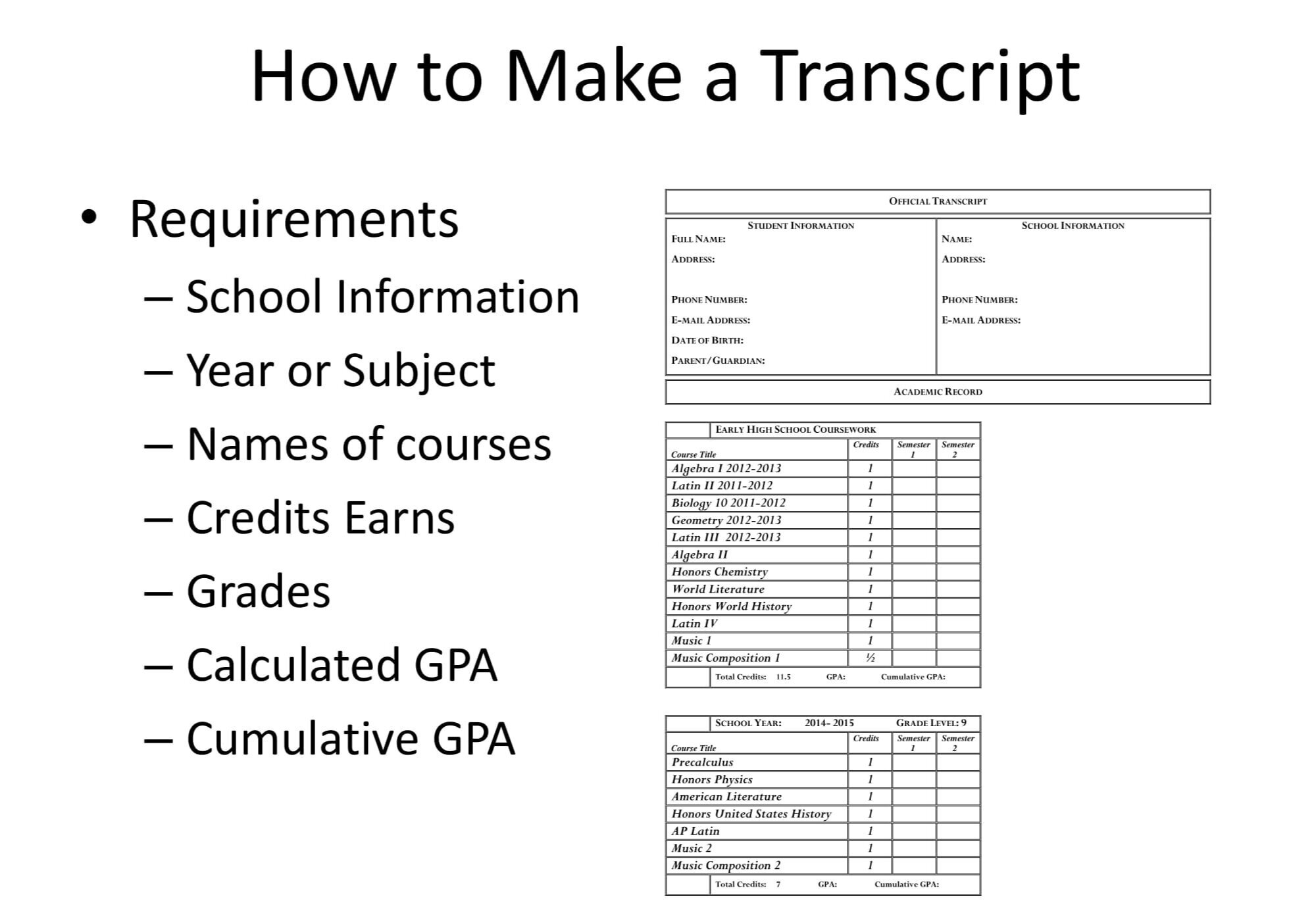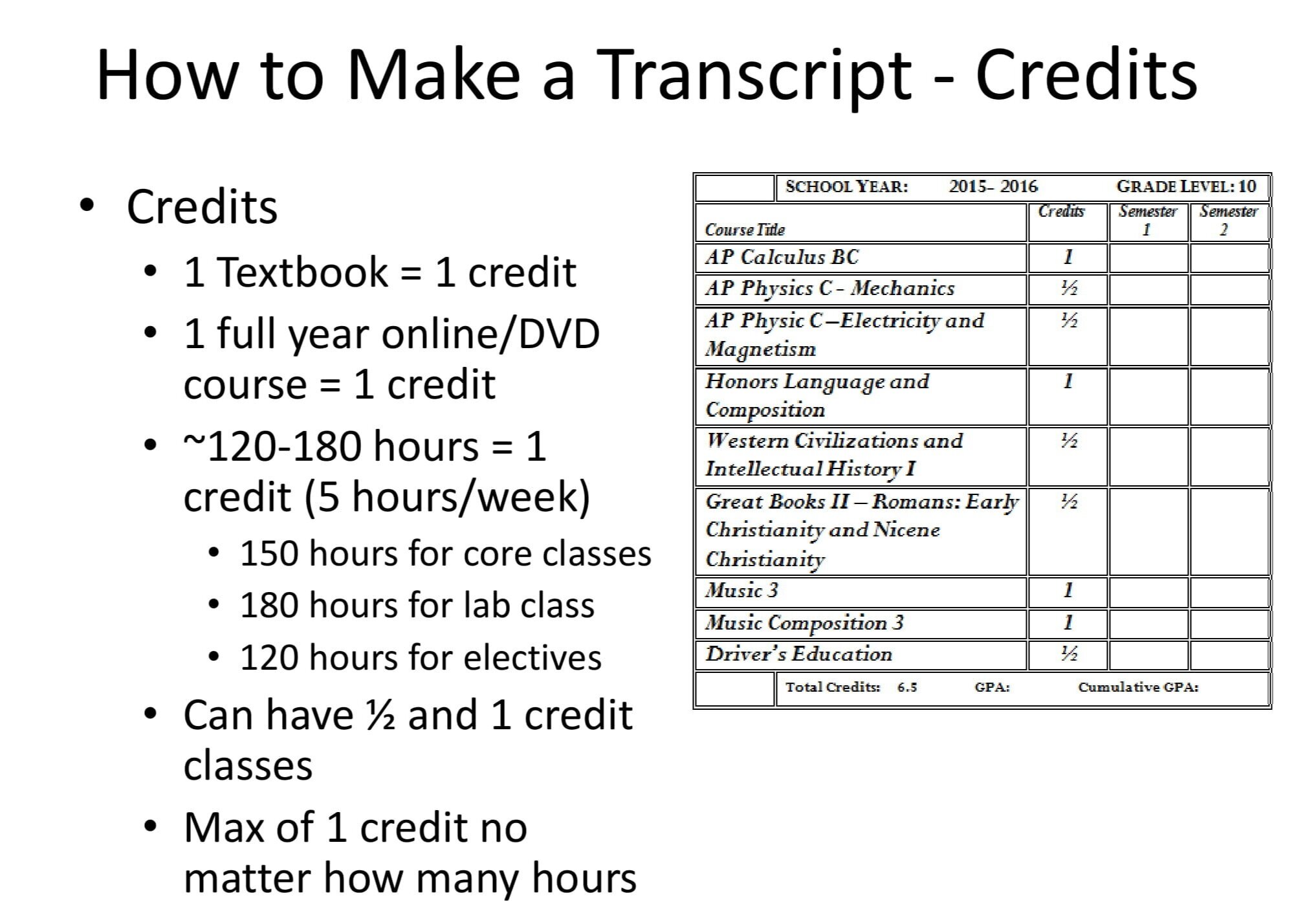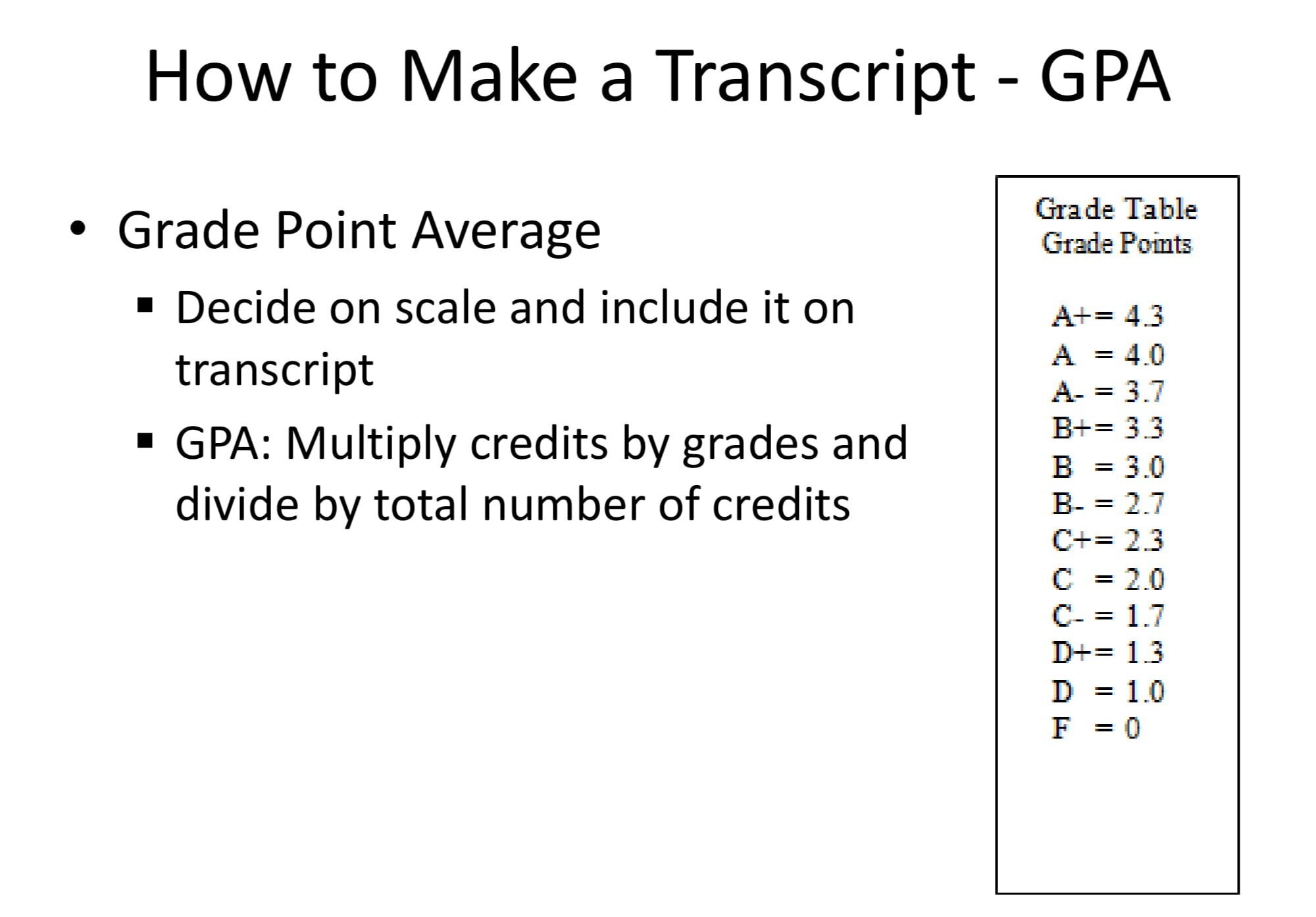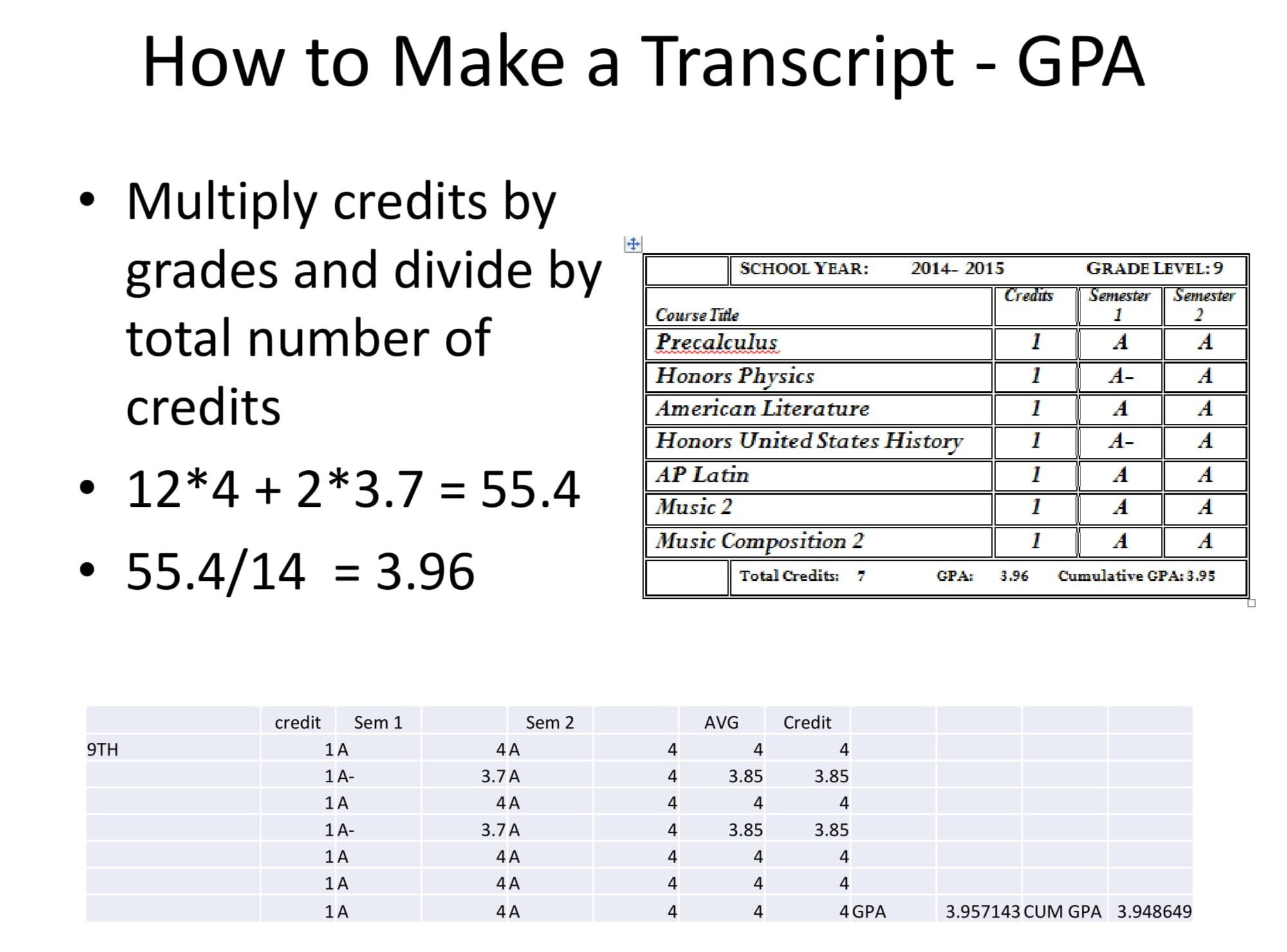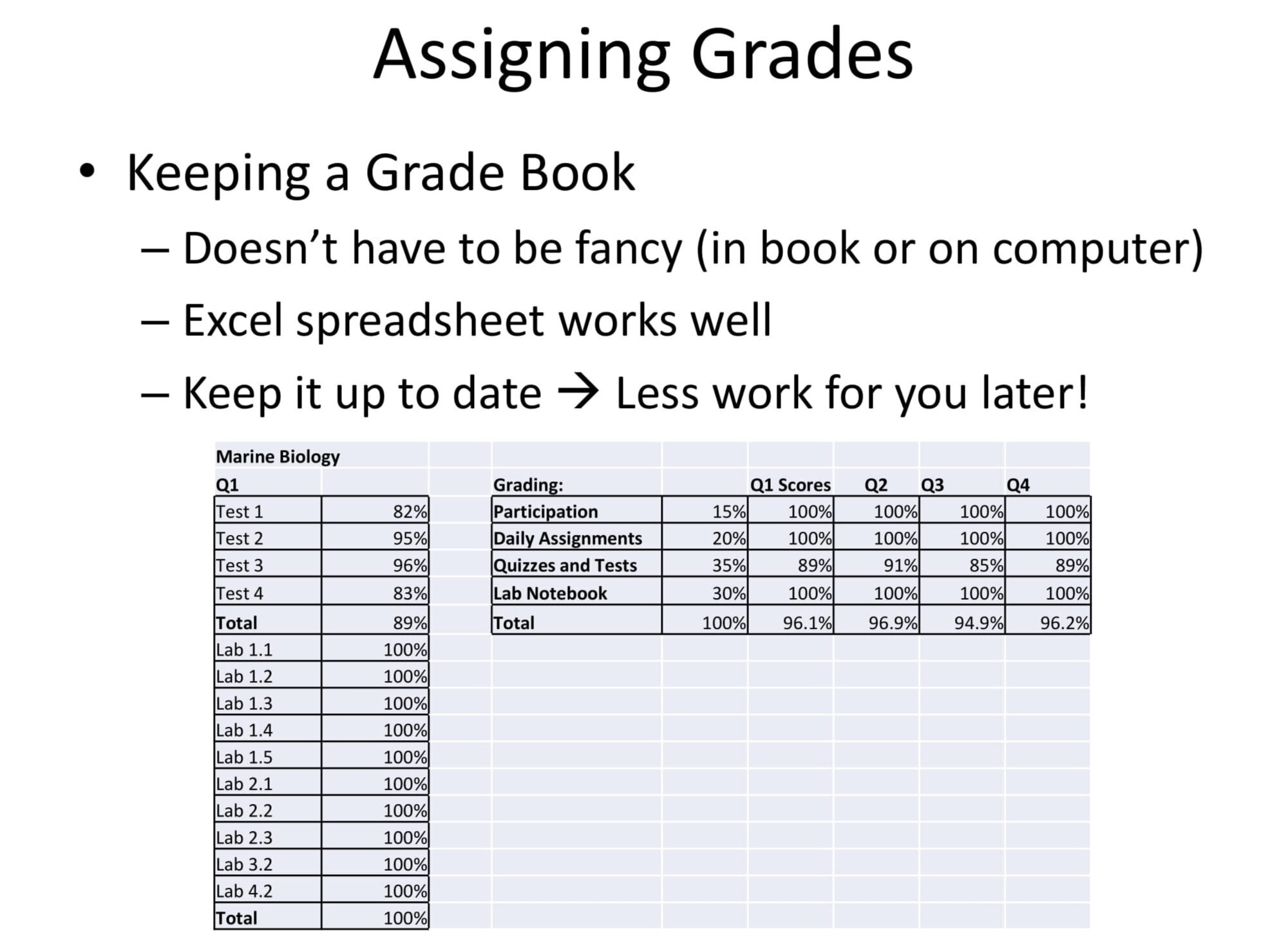High School Transcripts, Grading, and Course Descriptions
Lecture and Workshop
Presv. Ana Coman, Ph.D.
Saint Kosmas Conference
California
April 2018
The power-point and transcript for this presentation follow the PDF downloads:
Slide 1:
transcript:
This is the lecture and workshop for high school transcripts, grading, and course descriptions. I'm Presv. Ana Coman and I'm from St. John the Baptist Greek Orthodox Church in Carmel-by-the-Sea.
Slide 2:
I want to tell you a little bit about me because it was clear to me from finally getting to attend a lecture myself that everyone is very unique in the way they homeschool. They're unique depending on their personality, their strengths and weaknesses—we all have them—and their family size and dynamics. So, of course, what I'm going to say is going to be very affected by the same things: my family and my personality. So I thought I'd tell you a little bit about me. I've got two boys, ages 11 and 18, and they're 6 and a half years apart. So, for me, homeschooling each of them was like homeschooling an only child in a lot of ways. I am trained as an electrical engineer so I'm very methodical and very orderly, and so everything I do is like that.
This workshop is about learning how to make transcripts. It's a nuts and bolts seminar. It's just about how to get the work done, and it's just one perspective. There are a lot of different perspectives that will work. This is just the one that we've used, and the one that has been handed down to me and learned over time. But I encourage you to talk to other families that have been through this to get other perspectives and to try to find one that will work for your family.
Slide 3:
So, starting at the very beginning: What is a transcript? And who needs one? A transcript is an official record of the student's work showing the courses taken and the grades achieved.
Who needs a transcript? High schoolers applying to college—even if they went to high school and then worked for several years, and then are deciding to go back to college. They're most likely going to want to see a high school transcript. Community college students that are applying to four-year universities sometimes need high school transcripts. High school students applying to community college are sometimes asked for a transcript. We weren't, but every school is different. And adults of all ages applying for jobs sometimes are asked for a high school transcript.
I think it's advantageous that we just plan on having a high school transcript. And then we're covered.
Slide 4:
We're going to talk about how to make a transcript. I have a template that I use. There are many templates available, or you can make your own.
We're going to talk about what to put on it and what other supporting documents to prepare that you may need for the college admission process. These supporting documents include course descriptions and a list of extracurricular activities, including how much time they did those activities. Sometimes schools ask for reading lists.
Then we’ll talk about how to assign grades, how we've assigned grades, and how I was taught to think about grading.
Slide 5:
The main things that are going to go on a transcript are your school information, the year and/or the subject for each thing that you are doing.
If you are organizing your transcript by year, you might say “2017/18” as a section heading. You can also organize your transcript by subject. If you are doing it by subject, which I'm going to talk about too, you might have “Math,” “English,” “Science,” and that kind of thing as section headings.
Then you need the names of the courses and how many credits they earned—and we'll talk about how to assign credits and grades—and then you need a calculated grade point average and a cumulative grade point average.
Slide 6:
First, at the very top, you're going to have your student information and your school information. Sometimes people ask, "Why is the college or university going to accept this if they want an official transcript?” Well, this is an official transcript because you write along the top "official transcript." That's what makes it official. Your student's name, address, phone number, and all of that should be straight forward. Then the name of your school. You get to have a name for your school. Your school's address is going to be your address. Your school's phone number is going to be your phone number. The school's email is going to be your email.
Slide 7:
Then, at this point, you're just going to start gathering. I really encourage people to do this every year, so that you don't get to the end, and then you're trying to remember what you did for the last four years and what kind of performance they had. So every year name your courses, put down the year, the credits, the grade, and then you're all set, and you can put it away until the end when you need it.
Slide 8:
Let's talk about some of the things that will go on the transcript.
Course names: You're going to name the course. How do you name the course? You could name the course depending on the book you used, calling it by the same name as the title of the book. If you use an online course, it might have a name already. Or you get to make up a course name, like "Music 3" or "Instrument Making,” which is a course name my son made up for something he was doing.
School year and grade level: You'll want to put the school year and the grade level on the transcript. On this template, the school year and grade level are along the top. This transcript template is organized by the school year. So there are on this school year, math, science, English, and music. All of the subjects taken are listed under each year. But I will also talk later on how you can organize the four-year transcript by subject.
Slide 9:
Now we get to the point where we need to assign credits for the courses our kids took. It's pretty straight forward: one textbook is one credit. This idea of one credit comes from a Carnegie unit. In California, if you look at their school transcripts, you see these huge numbers for credits. You don't see numbers like 6, or whatever this adds up to—6.5. Rather, you see numbers like 65 because, in California, my understanding is that most schools assign 10 of their local units for every Carnegie unit. But schools across the country recognize this.
Question from the audience: So, what's a Carnegie unit?
Presv. Ana Coman: It's just a unit. It's just an arbitrary unit of measure that means 1 year-long high school course. So to assign a credit—if you're going to go by that—one credit, or one unit, is one textbook. If they went through the textbook, that's a credit, that's a full year of high school [for that subject]. A high school textbook is one unit or one credit. Also, one full year online class or DVD course is one unit or one credit. If they worked 5 hours a week [on a subject], that's one unit or one credit for that subject. Sometimes I've seen it broken out into 150 hours for core classes, 180 hours for labs because you have a little bit more time you need to use the lab. But it's just simpler to say: Did they work about five hours a week on this subject? Yes? Ok, that's a credit.
You can also have half-credit classes. For half-credit classes, maybe they worked 2 1/2 hours per week, or they went through half the book. You're not going to have anything other than a one-credit class or a half-credit class. You're not going to have a two-credit class or a 3/4 credit class. If they worked more than 5 hours per week, then they just did a really good job. Maybe you could label it as an 'honors' class if they did a lot more work than normal.
Question from the audience: If the course was two parts, or two books, or two DVDs for the year, it would still be one credit for the whole year, not for each semester, right? It would be half and half, right?
Presv. Ana Coman: Yes. Correct. I erased the grades on the template you see here, but on this two-part course, he would have had a separate grade for each semester, but it would still just be one credit total because this was one full year. It's one credit for the whole year, and the grades he got for each semester.
And this is up to the family. I really break this down because I'm just a very analytical person. But you could have just one grade for the whole year, and that's fine. It's whatever you decide the transcript to be, as long as it's orderly, and someone else can look at it and understand what you did.
Slide 10:
The next thing on the transcript is going to be the grade point average. In order to do that, you have to decide on the scale. What you see here is the scale that I used. It's pretty detailed from A+, A, A-, but you could just put A is 4.0, B is 3.0, C is 2.0, D is 1.0. It's perfectly acceptable to do that. You just want to have somewhere on your transcript what scale you used for the GPA.
Slide 11:
Then to get the GPA, you're going to multiply the credits by the grades, and divide by the total number of credits. So it might sound a little complicated, but it's really not. We'll work through a couple of examples, and then I'll show you how I like to do it. I don't like to do this math in real-time. I like to make a spreadsheet to do it for me.
So, if we're going to multiply the credits by the grades, and divide by the total number of credits... You can see that all these classes had one credit each, and he got grades for each of them. He had seven classes, and he had 14 grades because he got a grade each semester for each class. Twelve of these grades are "A," and two are "A-." So this is the formula breakdown: 12 x 4.0 (which is 12 times "A,") and 2 x 3.7 (which is two times "A-"), which gives 55.4, divided by the total number, which was 14. So 55.4 divided by 14 is 3.96. That was his grade point average for this school year.
I like to make an Excel spreadsheet and just let it run for me. I like to do a GPA for every school year, and then also do a cumulative GPA as they go through, if you're organizing the transcript by year. If you organize the transcript by subject, it looks a little bit different.
Slide 12:
You can also organize the courses on the transcript by the academic subject. A lot of homeschool families like to do it this way. It's especially good for kids who have a lot of early high school credits, which I'll talk about. Those are credits for high school level classes that were taken before the student was in high school, or before they were high school age. Organizing the transcript by subject also good for kids who spend five years in high school, which was the situation for my son. He was young, so we kept him another year, and so it kind of looks like he was in high school for five years. It's just how you look at it. With homeschooling, nothing is set in stone. So for a transcript organized by subject, this is how it would look. For English, you'd write [in one section] all the English classes they took during all of their four (or five) years of high school, and what grades they got. Then you would calculate their GPA at the end. [And you'd do the same for every subject.]
Slide 13:
Regarding early high school credits: Sometimes, kids will take classes before they get to high school that are high school level work. This includes Algebra 1 or above in math and high school Latin courses taken prior to high school. If they've been through at least half of the Henle Latin book, that's considered a year of high school Latin. The way you represent early high school credits on the transcript—if you're doing it by year—is instead of the first block being 9th grade, you have a block that is titled, "Early High School Credits." And you just list on there what high school level courses they took before technically beginning high school.
Slide 14:
The other thing that's nice to put on the transcript (after you have all the grades and information) is a page with all the other stuff: SAT scores, SAT subject scores, AP scores, or other scores like the National Latin Exam, etc. This is an example of what that page in a transcript might look like. This is the SAT score, the total, and then the separate scores for the reading and math. That's the way the new test is structured. Here are SAT subject scores with whatever they had and the level. You are not required to put these on there, and you don't have to put all the subject tests on there. If they took some and they didn't really do well, maybe you don't want to put them on the transcript. If they took the SAT multiple times and they didn't do so well on some of them, you don't have to put them all down; you can just put the highest score. It's really up to you what you want to put on the transcript. You want to show their best on the transcript.
Question from the audience: So, the transcript is like a resume, in a way? A resume for their education?
Presv. Ana Coman: Yes. It's presenting their academic life to a college. I've also seen transcripts where the people went ahead and put the extracurricular activities, too, right on the transcript. That's a possibility as well.
Question from the audience: Do you mean like sports outside the home and things like that, music lessons?
Presv. Ana Coman: Yes. Music, science fair, St. John Chrysostom Oratorical Festival, or whatever. They've put it on there. Or even community service: “300 hours at St. John the Baptist Church.”
Slide 15:
Now, I'm going to talk about assigning grades. I'm sure everybody does this differently, but this was wisdom passed on to me. I grew in a homeschooling community that had many people that were homeschooling high school or had graduated kids already and had many years of experience, and this stuck with me as being a really wonderful way to look at it. That is, when you're assigning grades, the goal is mastery. You want the kids to master the material. We're not constrained by a school year. We're not constrained by a textbook as homeschoolers. We want them to learn the material, and if they learn the material that's an A. If they have mastery, that's an A. So, the ideal would be that your child had all As because you would work on the material until they mastered it. There's nothing wrong with having a transcript with all As. Sometimes that's not possible. Sometimes you're constrained. You may feel like you have to move on before mastery is achieved, or you may just have a child that, no matter what you, he is not doing the work. A lot of times, I've seen that they do their regular school year, and then depending on what their grade is at the end, then they may have to continue into the summer to achieve mastery and bring up the grade. So this is just something to think about where grading is concerned.
Slide 16:
It's my experience—and what I was taught—that it's really good to have a grading rubric. This is something you can put on your course description, and it lets the colleges know that you had a serious way of evaluating them. It's also good for the older students to know that these are the expectations. This also takes some of the pressure off mom to say, “OK, you didn't do this assignment very well.” Rather, we can just look at the rubric and say, “Did you do everything you were supposed to do?” And let the numbers speak for themselves. This is the same way they're doing it in a school. If you have a math class, it's going to be based on tests and homework and maybe your participation in class. It's never going to be based just on test scores. So make sure that when you're making your own rubric, you don't just evaluate them on tests. You should evaluate them on other things too. And every class might look different. I just put up three examples of three different subjects.
Question from the audience: So these are samples of rubrics?
Presv. Ana Coman: Yes. So, here you have world literature; maybe 50% of the grade is going to be essays and major assessments, 35% weekly quizzes and writing, and 15% course participation. Every syllabus has this kind of thing so that students know what's going on. If you take a class anywhere, it would usually have this included, and there's no reason you can't give this to your homeschool student as well. Just set the expectations. I also think that every writing assignment should have a grading rubric: This is what's expected, this is A work, this is B work, this is C work. These sample rubrics are all available online. I've got many examples that I can send you as email files that I've pulled from here and there. You can choose the one that looks the best, and then you just let the numbers speak. A rubric changes it from, "This is what mom thinks, or dad" to "This is A work; this is B work."
Question from the audience: I feel like if homeschool families set up a transcript template, this could be helpful, even if they are not very big on grading. We are very lax in grading in our homeschool, but I feel like having this set up in the beginning, gets you in that frame of mind, and then it gives you a place to plug things in as you do them. I really prefer grading an A on mastery, where we're going to just work on it until you're done (versus grading according to a rubric). So I really like how you said that.
Presv. Ana Coman: Even in 7th grade, there's no reason why not to get this organized. This doesn't have to start in high school. As I said, there are lots of examples online, and if you give me your email address, I can send you a bunch of stuff too. If you just search "grading rubric," then you'll just come up with this, or search "homeschool grading rubric." There are some rubrics that will come up from a search, and you'll say, "Oh, yes, this is what I had in mind," but you'll get some that are college-level and are too advanced or too specific.
Slide 17:
It might also be helpful to keep some kind of grade book. If you're going to keep track of the grades this way, it's really good to have some kind of documentation that you're keeping up to date. A teacher does this for 30 students in the class. We might be doing it for just one or a few. It doesn't need to be fancy. I have a date planner, and then it's just the last page in the book that I keep track of stuff. It could also be on the computer. One year I did this for my older son, and I had it on the computer. I just kept track of it that way so I could print it for him, or send it to him once in a while, and he saw how he was doing. You could even have a responsible child be keeping this for themselves too. It's just really important to keep things up to date. I've heard so many stories and been with so many people for sleepless nights and sleepless weeks because they didn't think their child was going to go to college, and then all of a sudden at the last minute they decided to college, and they hadn't kept any records, and then they have to scramble. I just prefer—with my personality, I like to be on top of things—to just make sure I have everything in case it happens.
Audience: Something we need to think about, too, as Orthodox homeschoolers, and especially as private homeschoolers—we're private homeschoolers—is the laws that people are trying to get passed with private homeschooling. They're going to take us a lot more seriously if we're keeping good records.
Presv. Ana Coman: Yes, unfortunately.
Audience: They want to come into our homes, and they want to manage us more through the government. I think it's good when we can show these kinds of things. That will be in our defense, you know, if we have the records.
Presv. Ana Coman: Yes. It's sad that we have to think that way, but it can never hurt.
Audience: You know these new laws they are trying to pass against private homeschoolers. We've got to think about it.
Presv. Ana Coman: Yes, and it's just the beginning.
Slide 18:
This is all I have to say about transcripts and assigning grades, but there are other things that colleges ask for, and one of them—in our experience—is that they want course descriptions too. So, I thought I'd talk a little bit about that. The course description will contain a summary of the work in the completed course.
Slide 19:
If you used a book, your course description is going to be the book title, the author, the edition, and then the grading rubrics that you used. It's good to put that in there. These really vary depending on what kind of course it was. You could pull something right off the internet [for a course description] if it was a DVD course or an online course. Or you make it up on your own course description. Or you can get out the math book, write down the title of the math book, and then look at the first page, and copy the summary of what is covered. I have a marine biology course description sample here. It just lists the chapters in the book, what was covered, and the name of the book. So it's really open. There's no right answer. It's just that you want to document something so they can see what you did.
Slide 20:
There are other lists that, when applying to college, the schools are going to want to see. One of them is extracurricular activities.
Once again, it's just something that just makes it easier if you keep track of it every year. At the beginning of the year, you just sit down and do all this, or at the end of the year, you sit down and do it. It just takes a couple of hours, and then you're done for the whole year.
So, if they've done sports or if they've done music, or if they have awards, or if they have clubs that they've participated in, or some serious hobbies or community service—write them down every year. A lot of schools want to know the time they spent in hours per week, or month, for their extracurricular, so it's good to keep track of that as well.
Some schools want reading lists. They want to know what your child read, and that could have been reading that they did for school and also reading they did for pleasure. So it's just a good idea to keep track of that.
For an older student, it's perfectly fine for them to keep track of this stuff themselves. We don't have to be doing this, in fact as I was saying in my other talk, we should really be passing off as much as we can to them as they get older so that by the time they graduate they really are self-learners and self-sufficient and they're keeping track of everything. As I learned last night from the presentation I attended (College Preparation in the Homeschool Setting), this seems like just a natural outcome for large families [for children to take on responsibilities and become self-sufficient]. In large families, this is a natural process. For those of us who don't have large families, this is something that we have to be intentional about a lot of times.
That's all I'm going to say. It's not overwhelming if you keep up with it. It's something that you want to do every year and that there are many resources available to help with it.
I thought for the rest of the time, we could conduct this as a workshop. I have templates on paper that I can give you to look at or even to start filling in, and we can talk about it too if you have questions as you work through this.





